The “bread of the desert,” the date fruit, has been enjoyed for several thousand years. There isn’t simply just one kind of date fruit, but a variety of dates that all have their own unique characteristics, and sharing the qualities of being rich in minerals and vitamins. Originating in the Middle East, dates have become quite popular worldwide for their taste and nutritional value.
There are over 1,500 varieties of dates in existence, of which seven have been profiled below.
The Khudry Date
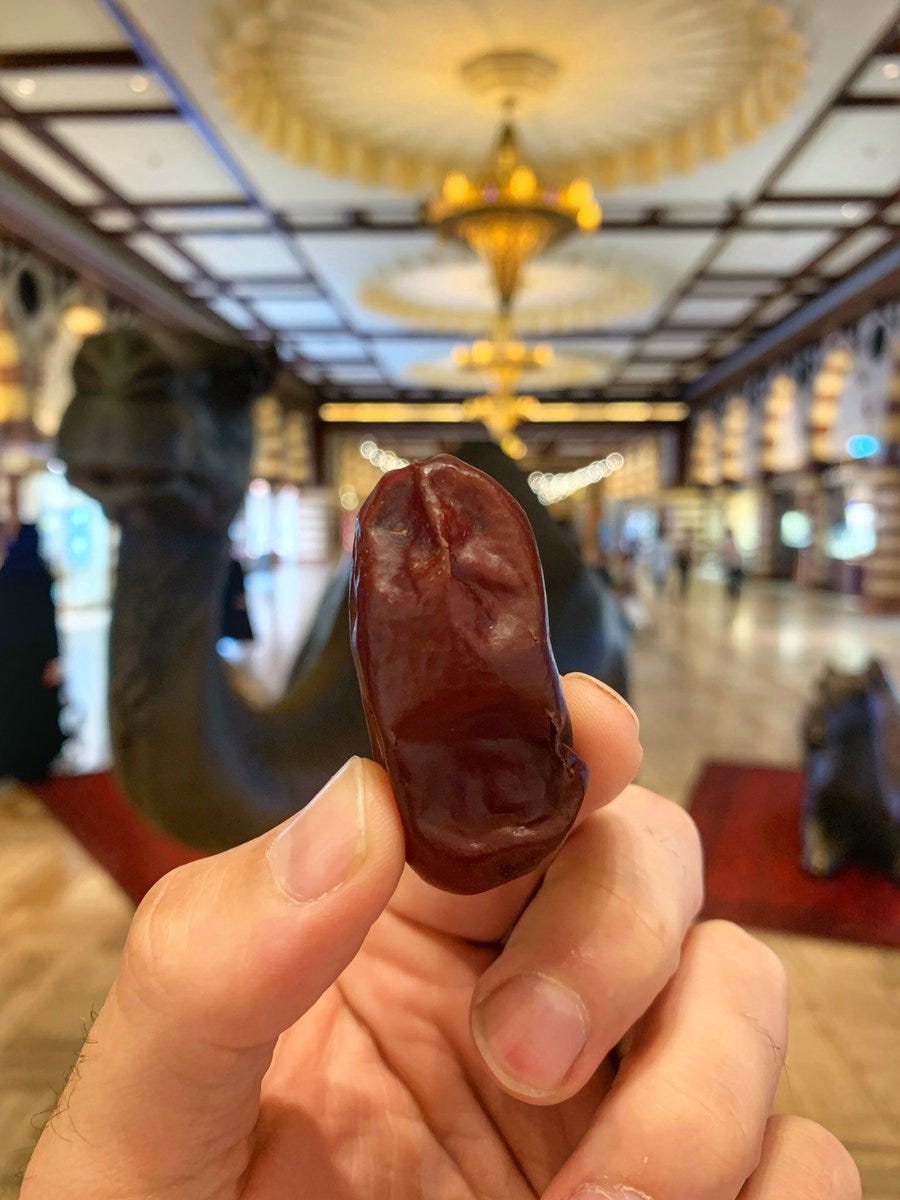
The Khudry date is known for its uniform dark brown color, lack of wrinkling, and slight flaking. It is primarily grown in Saudi Arabia and has hints of honey and caramel.
The Kimia Date
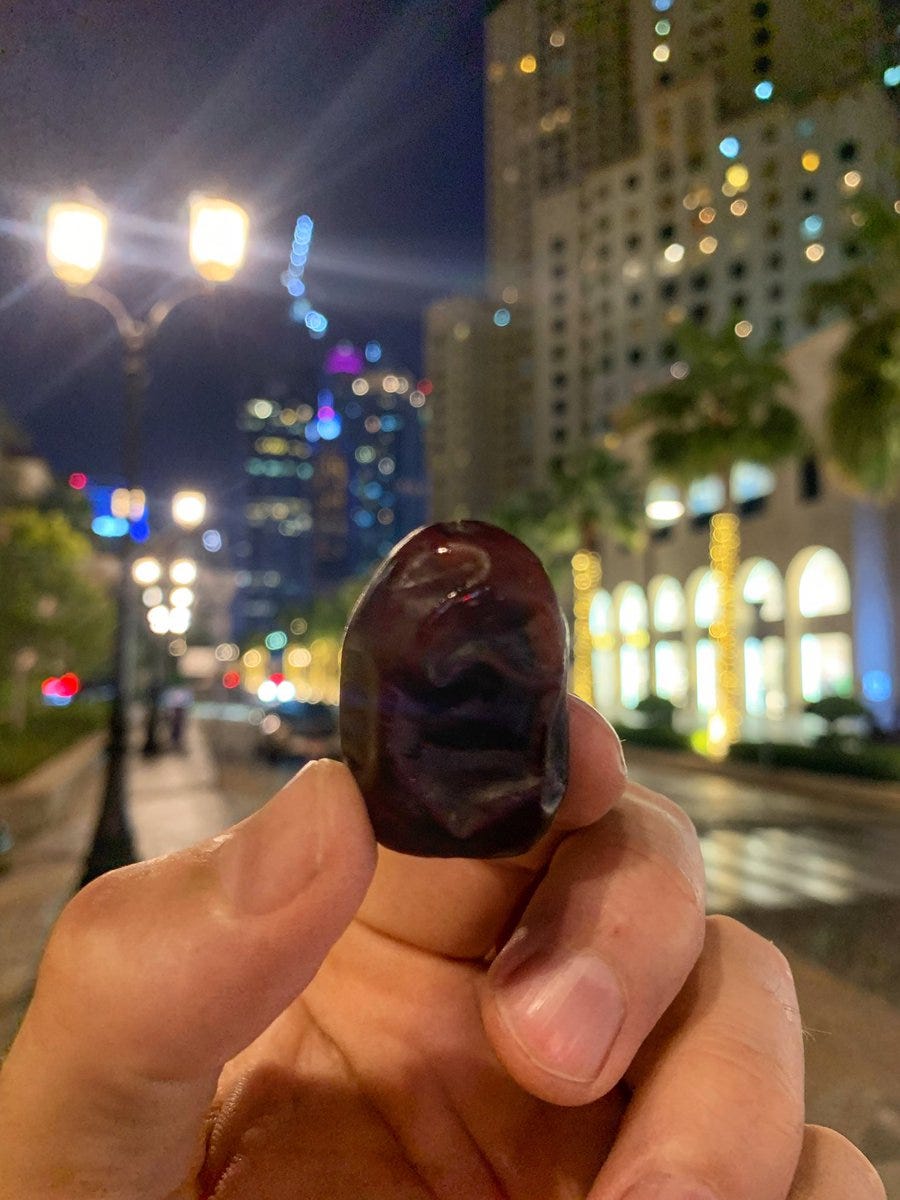
The Kimia date is grown in Iran and known for its plump texture and dark color. It has a rich, caramel-like flavor, and often used as a natural sweetener in desserts in Persian cuisine.
The Sagai Date
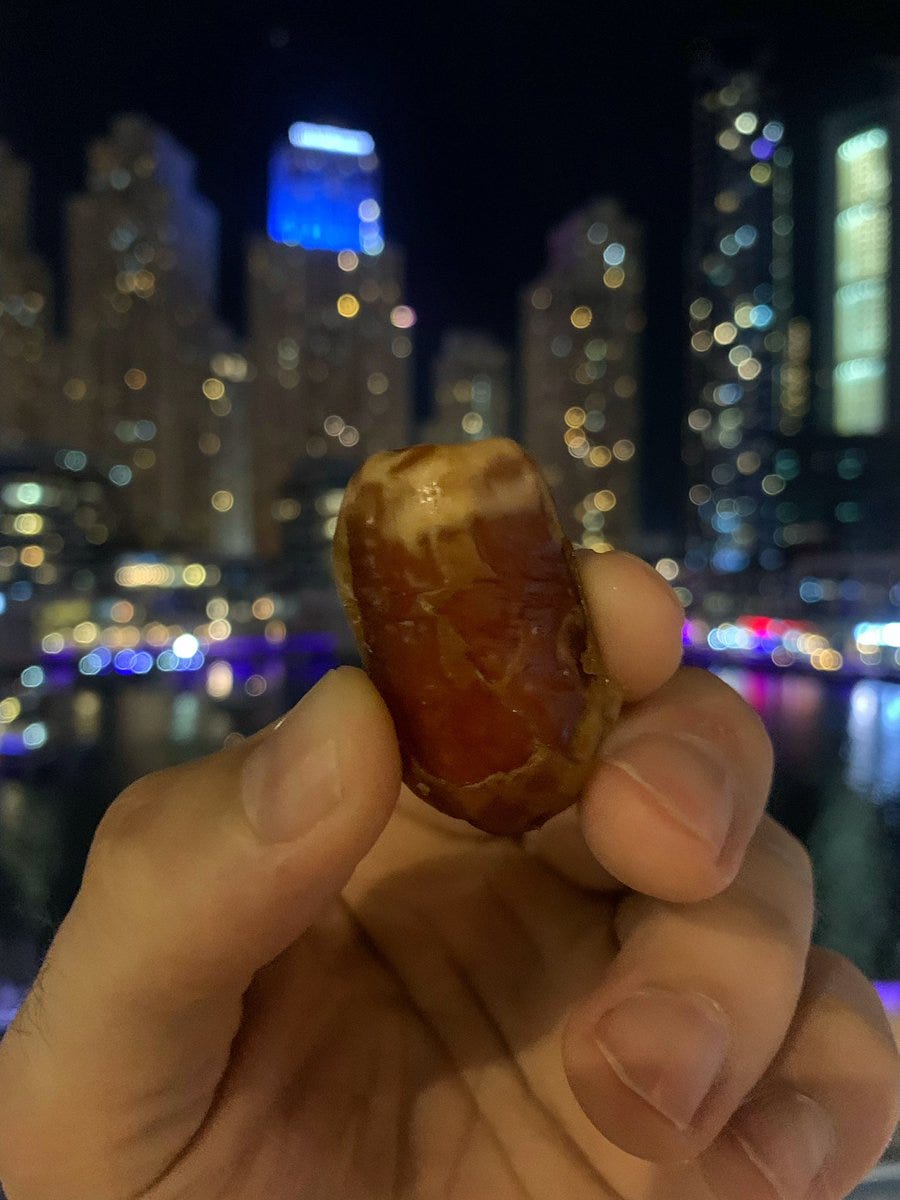
The Sagai date is famous for its two-toned color with a golden tip. People enjoy its balanced sweetness and unique appearance.
The Sukkari Date
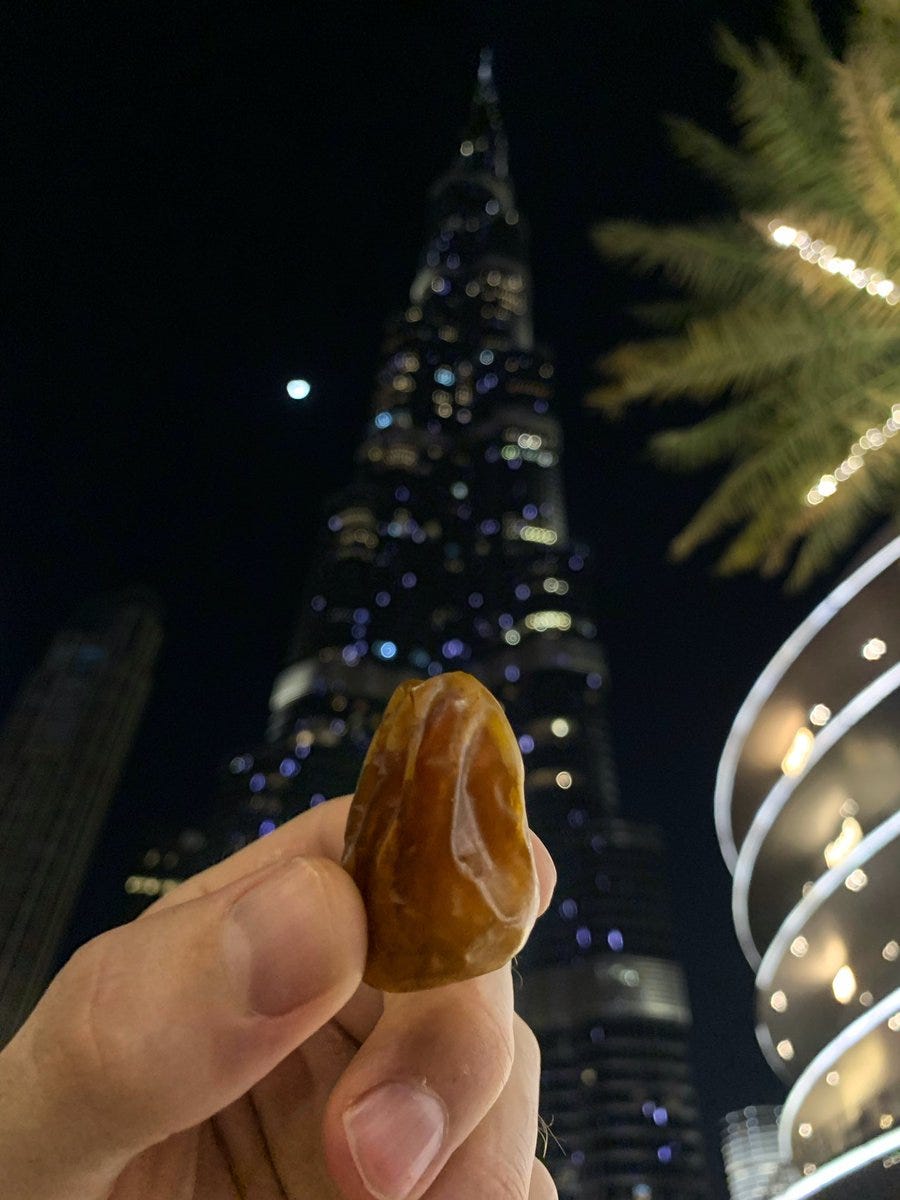
The Sukkari date is known for its golden color and sweet taste. It’s name literally means “sugary” in Arabic, and it is often paired with Arabic coffee.
The Ajwa Date
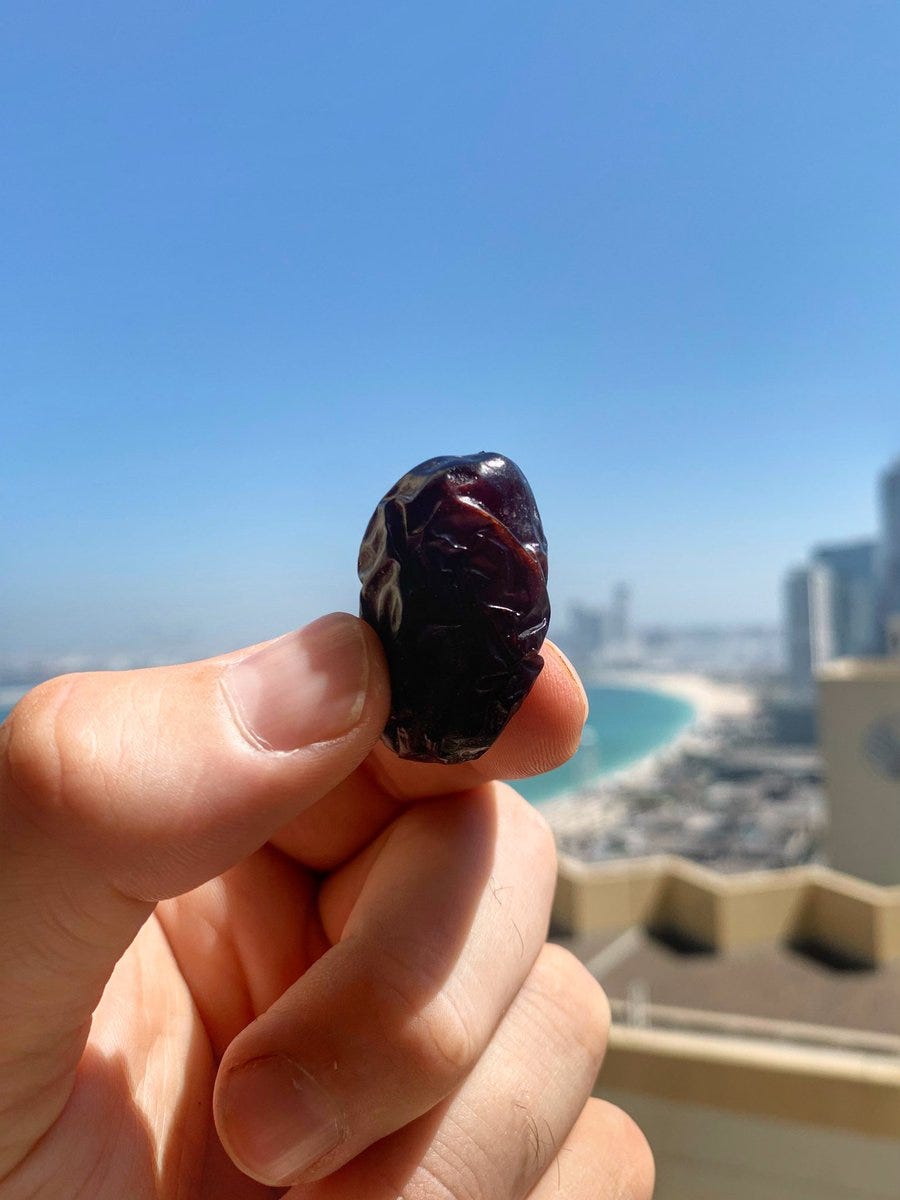
The Ajwa date is smaller in size, has an oval shape, and dark in color with a soft, chewy texture and distinct flavor with hints of caramel and chocolate. It is exclusively grown in Medina, Saudi Arabia, and is highly valued in Islamic tradition.
Muhammad said of this date:
“He who eats seven Ajwa dates every morning, will not be affected by poison or magic on the day he eats them.”
The Medjoul Date
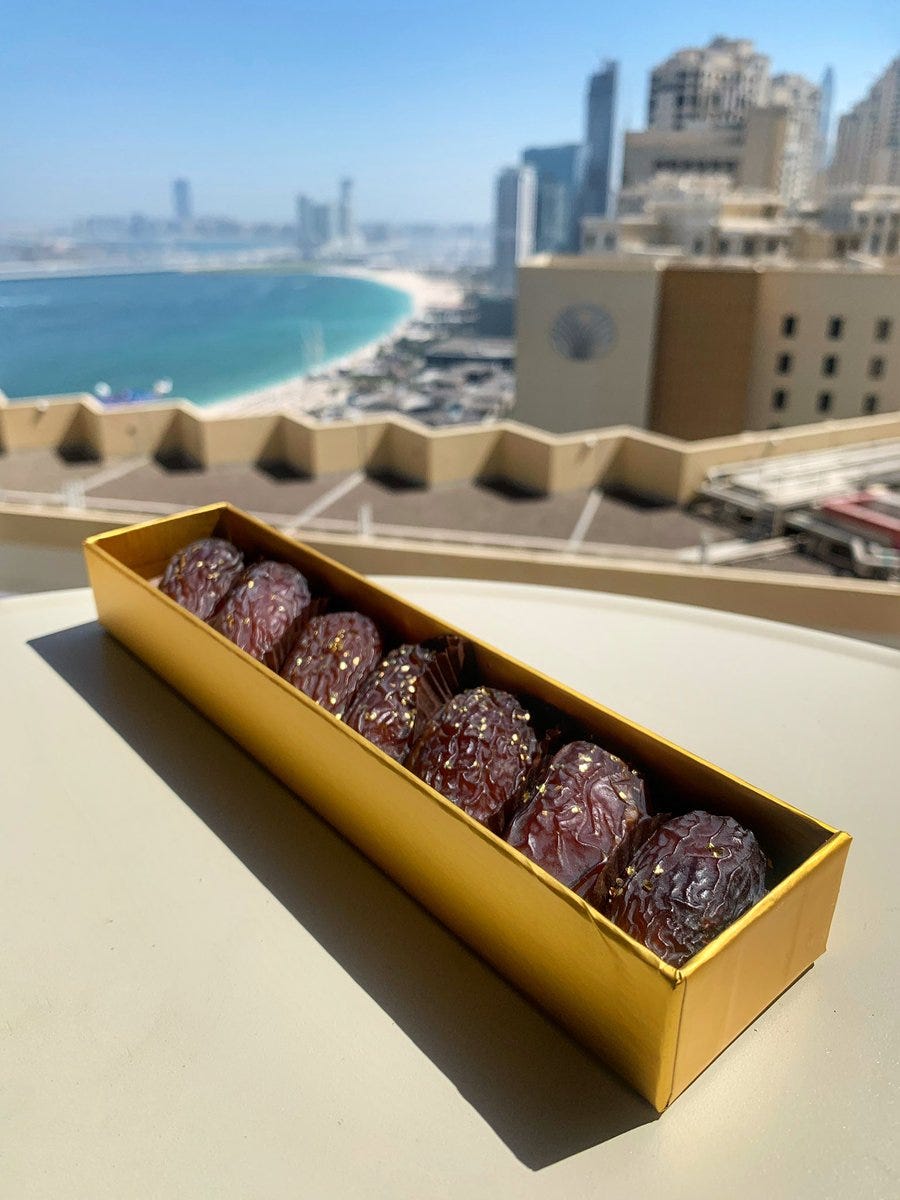
The Medjoul date is large and soft, and sticky and sweet when bit into. Often referred to as “the king of dates.” They are commonly used in baking as a natural sweetener. (The Medjoul dates pictured here are also gold-dusted, which is not typical.)
The Mabroom Date
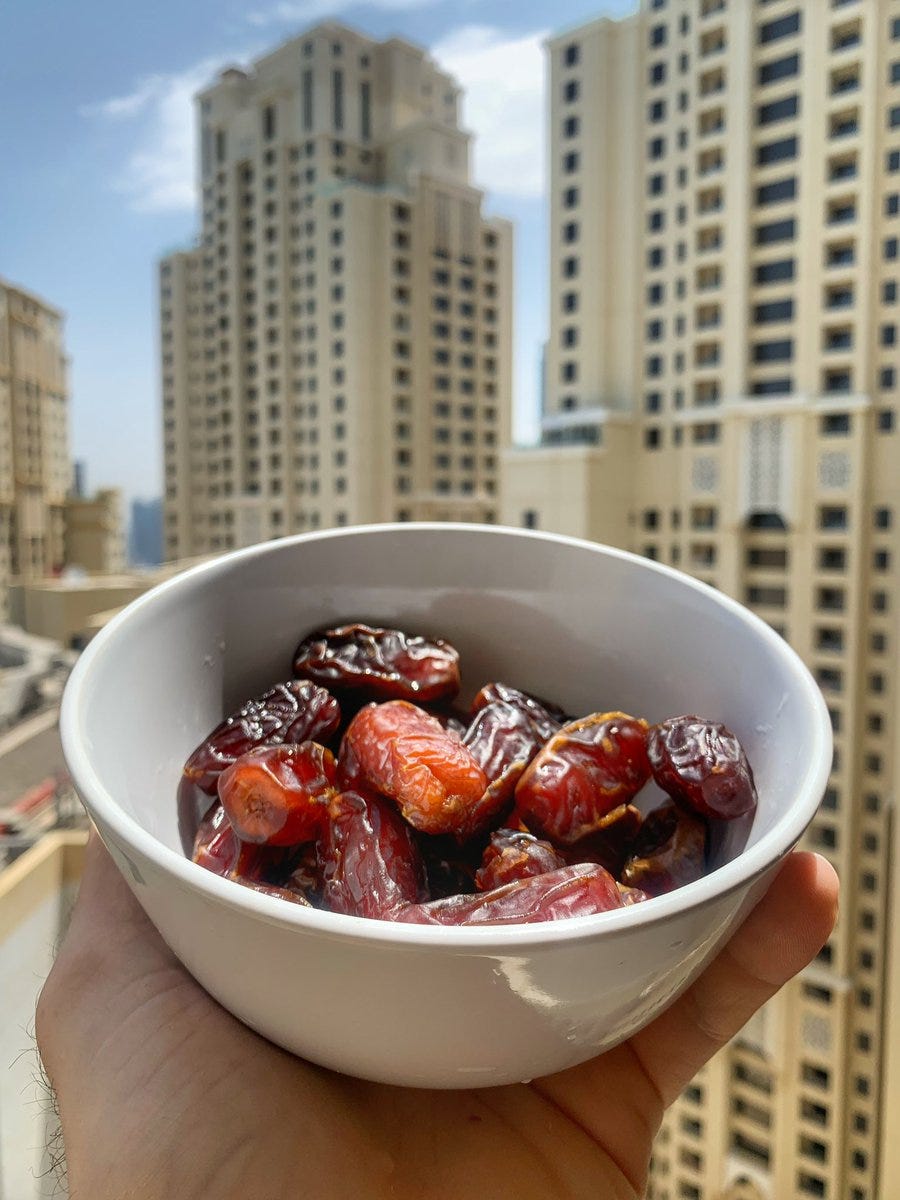
The Mabroom date is chewy, dry, and not too sweet. It has a unique flavor profile with notes of caramel and nuts.